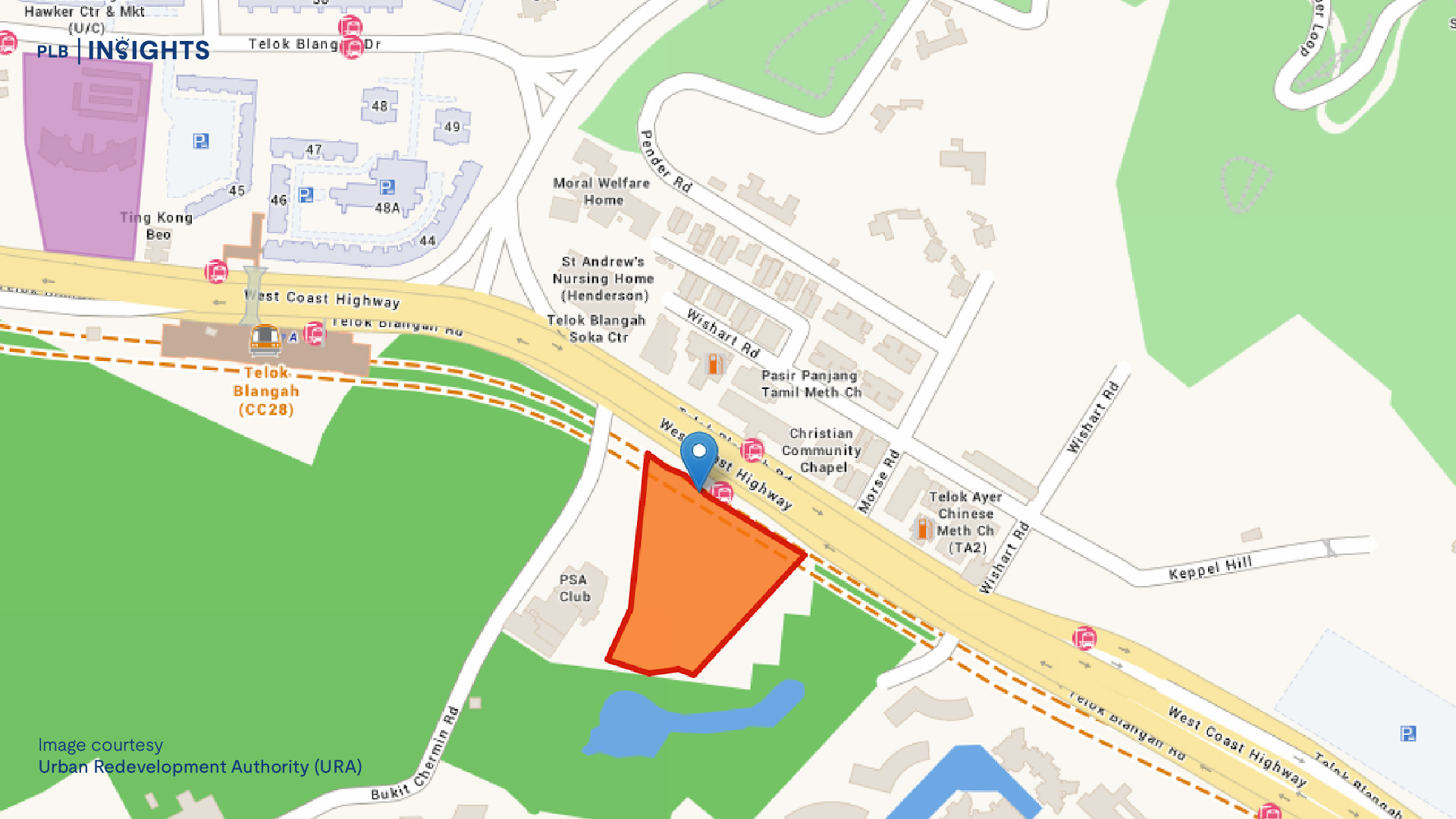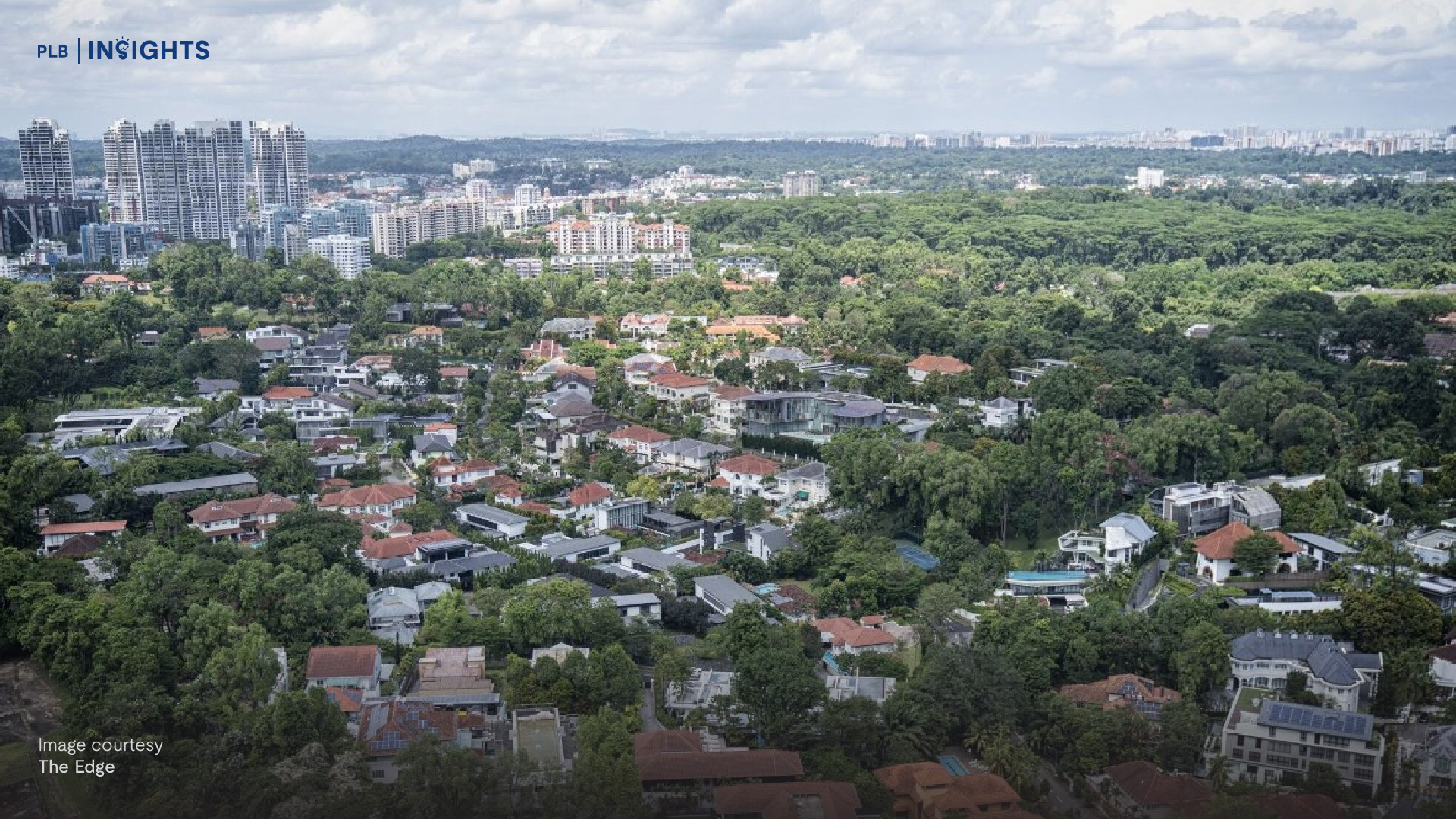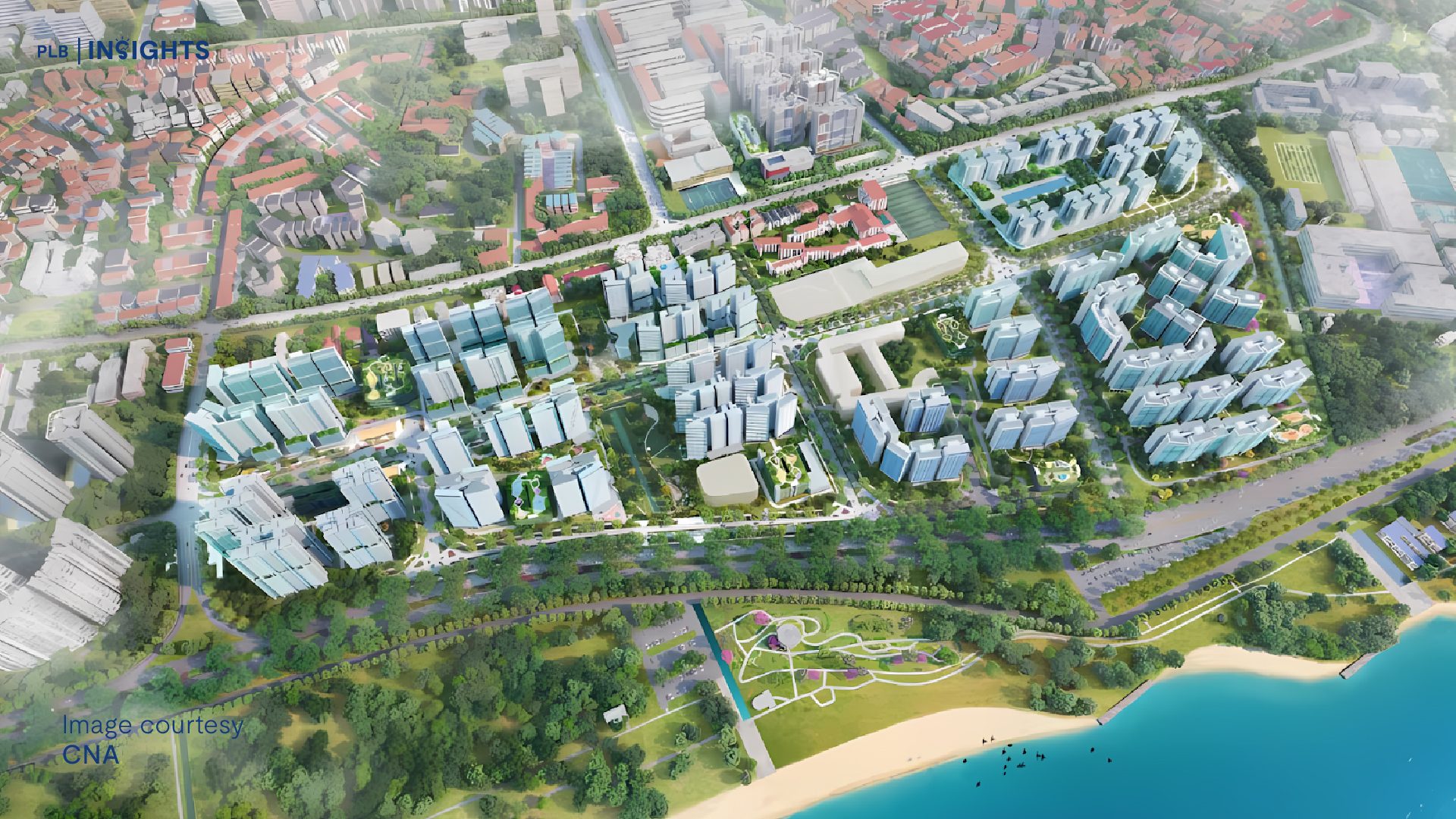
The end of 2023 signals a reflection on the webinars we helmed this past year. Did you manage to catch one of the 20 webinars we had throughout the year? Fret not as this article will summarise key points to look out for landed properties moving into 2024.
To truly understand market behaviours and existing data, we delve into historical data, acknowledging the potential discrepancies between the market and ever-evolving policies.
Whether you are considering a purchase in these elusive properties or a property enthusiast, you are sure to pick up something new. Let’s get started!
Hard Asset vs Soft Asset
Let us start by exploring the distinction between hard and soft assets in real estate. It is not the literal hardness of a building but rather its intrinsic value. Investors often seek properties with the highest investment potential, and recent news have positioned landed properties as increasingly valuable for wealth preservation. Examining data from 1995 to the present, where the overall supply has plateaued around 73,000 since 2018, we underscore the elusiveness of the landed property segment. In contrast, the high supply of HDB flats causes the subject property to be more soft.
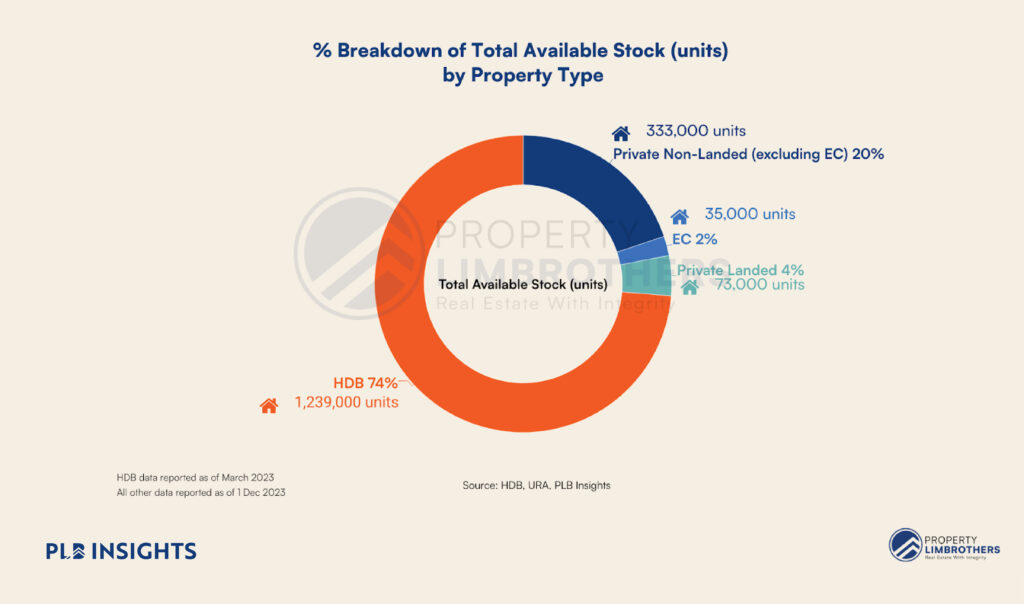
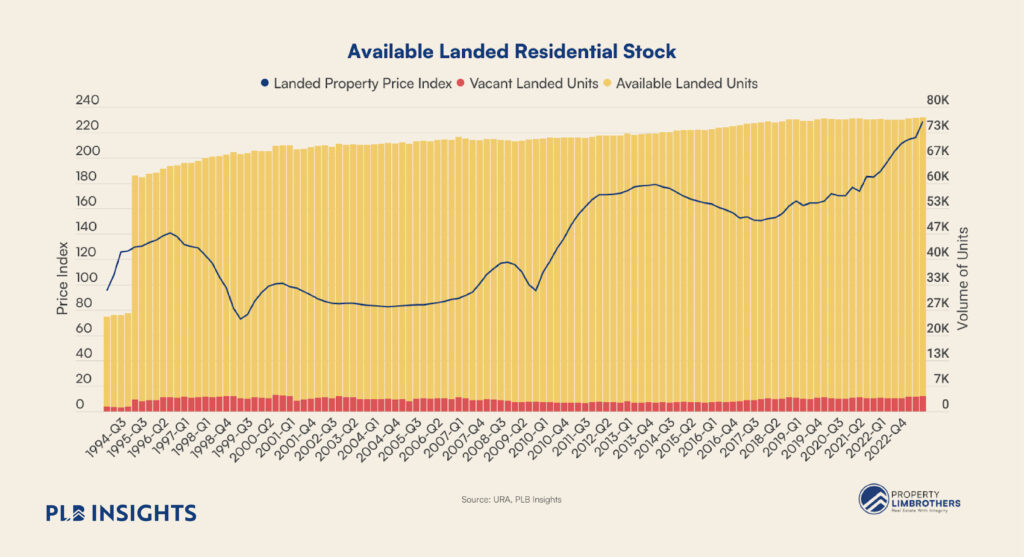

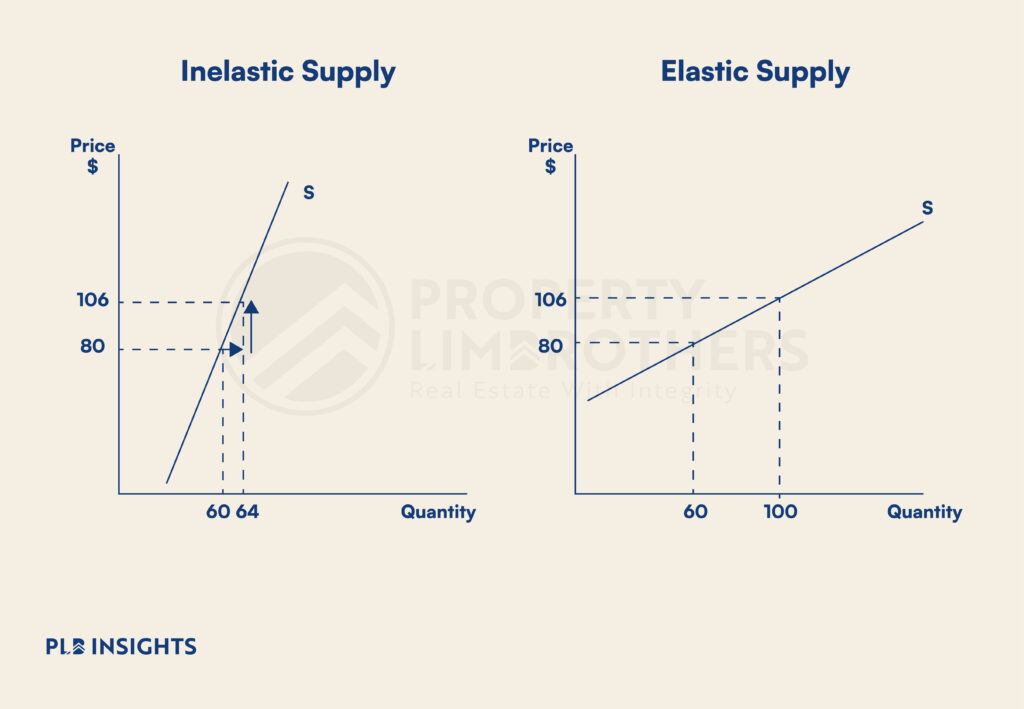
In economic terms, the landed market is notably inelastic. As a quick recap, an inelastic supply means that when price increases, the supply struggles to keep up with demand, leading to greater price growth. With the landed market characterised by low supply, we anticipate high growth and low rental yield due to the higher quantum. If you’re considering investing for the future, now might be the right season to switch to the harder asset.
Landed Performance & Forecast
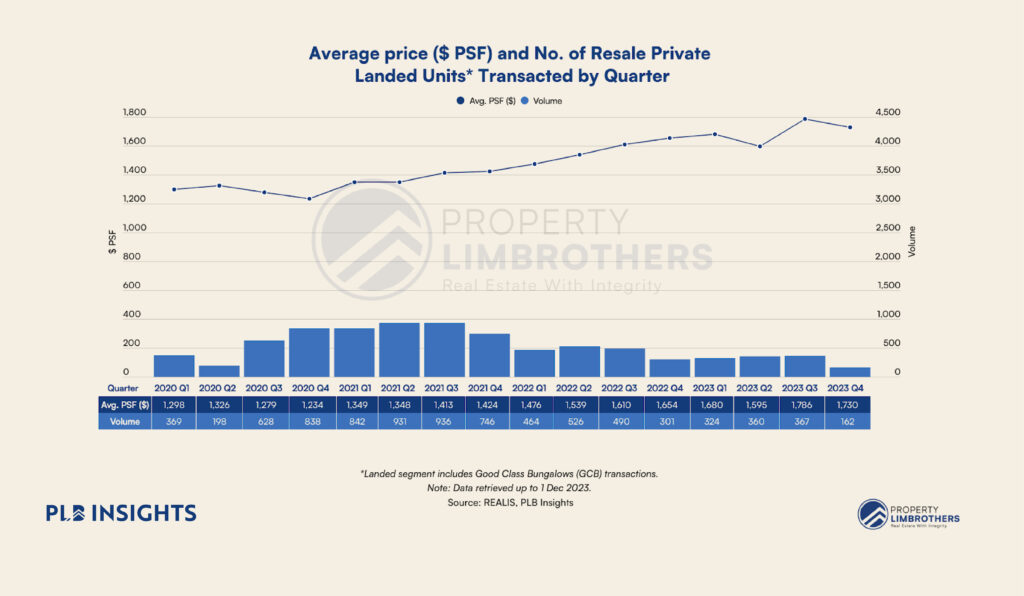
Turning our attention to the landed transactions of 2023, we observe a robust transaction price, averaging $1,700 PSF islandwide—maintaining strength since the peak in transaction volume in 2021. While the overall market stabilises to pre-pandemic 2019 levels in terms of transaction volume, a closer look at the property price index reveals a slight drop in private residences in Q3.
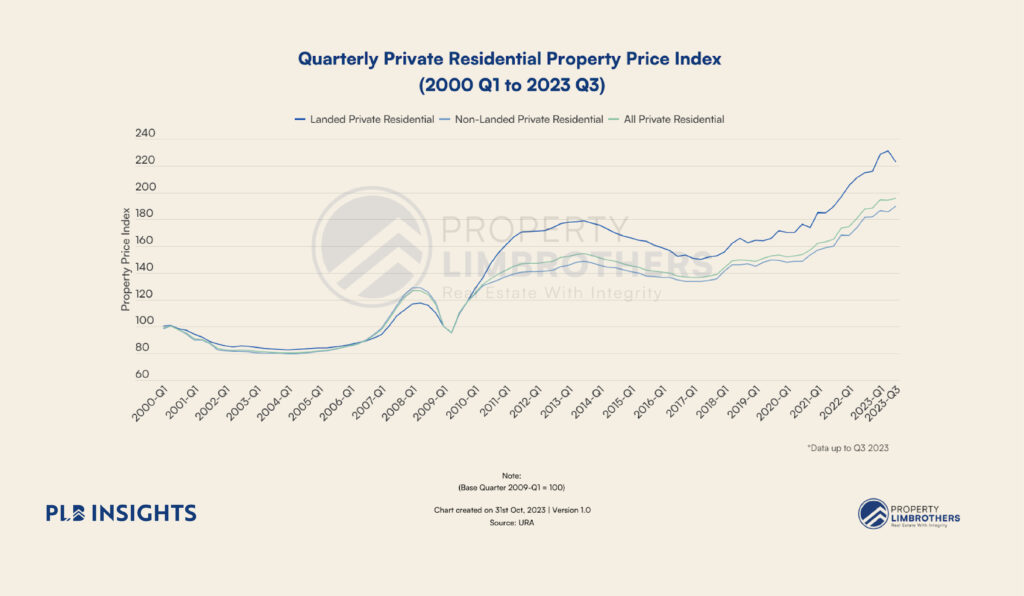
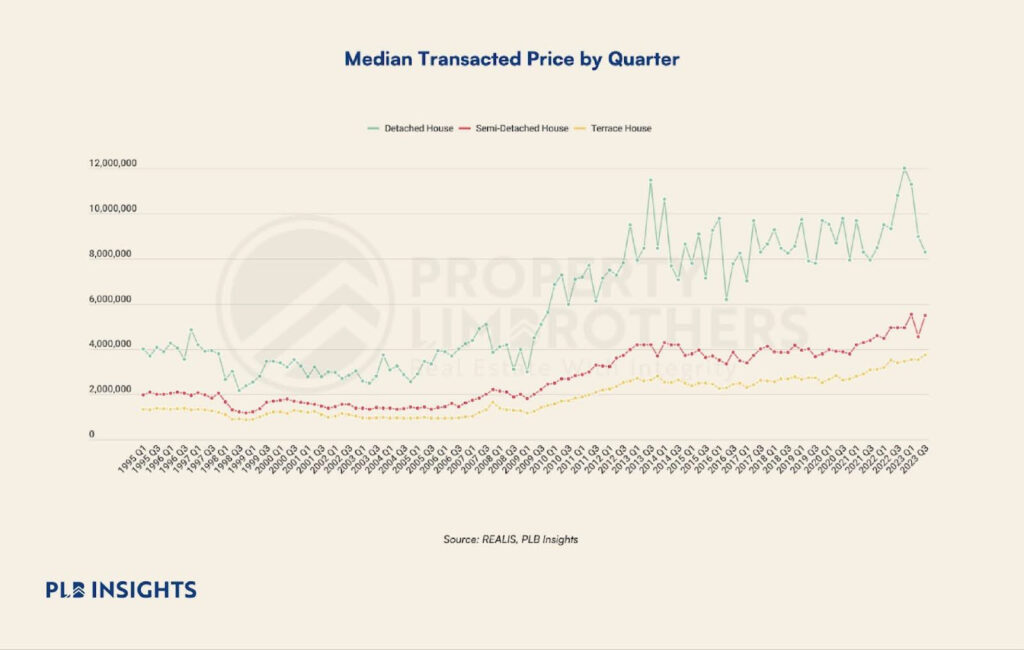
This dip can be primarily attributed to a significant decrease in the detached housing market, notably in districts 10 and 11, with percentage differences in PSF at -18.1% and 20.2%, respectively. As these districts contribute to 57% of the entire detached house market, their decline has a notable impact on the overall index.
Interestingly, during this decline, semi-detached houses and terraces saw a rise, reaffirming that the lowered landed price index is specifically due to the detached market. Going deeper into Q3 transactions, monitoring the unit price PSF of each transaction will unveil insights into the reasons behind the drop—whether it’s attributed to older properties or other factors.
Which District has Potential in 2024?
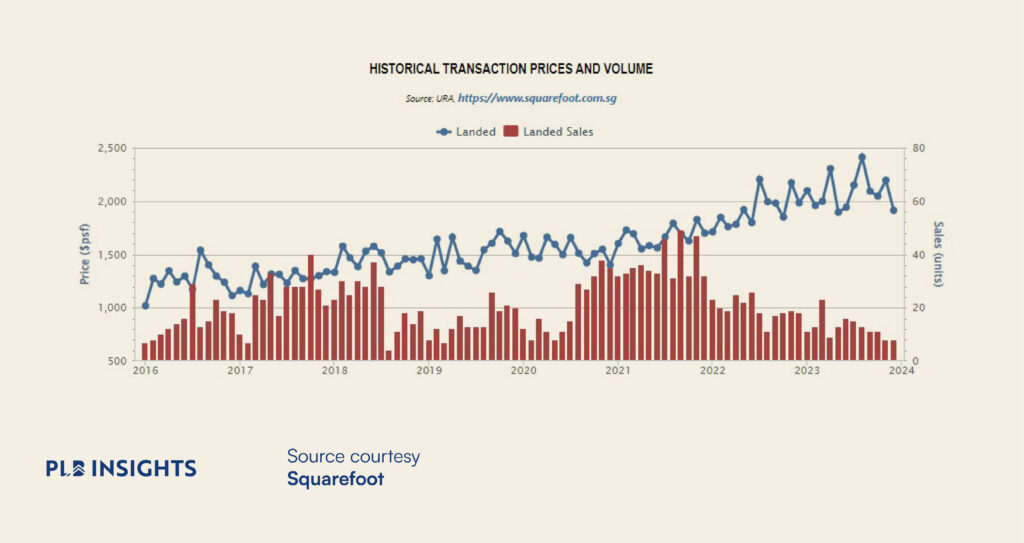
If you are hunting for a landed property home with the most future demand and popularity in 2024, consider the interplay of demand and supply. More demand often leads to increased transactions and potential valuation uptakes. Understanding the dynamics of each district involves analysing transacted units for demand and evaluating current inventory for supply.
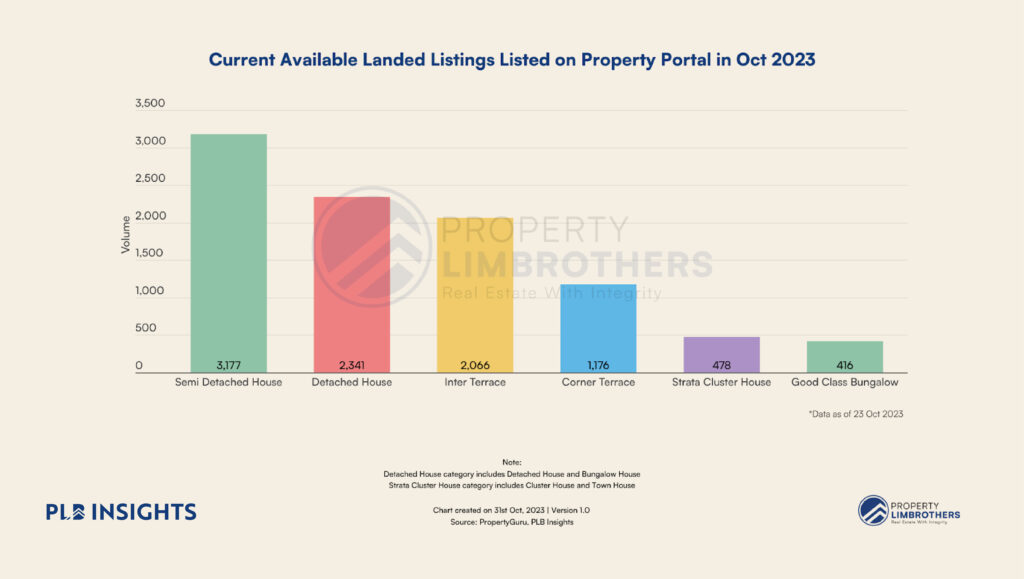
Purchasing landed property is distinct because owners own both the land and the structure on it. Factors like the age of the structure, plot sizes, and property conditions contribute to variations in price per square foot. As of October 2023, there are 3177 listings for semi-detached homes islandwide, representing the majority of landed market listings. Filtering out freehold/999 inter terrace projects offers a nuanced perspective for those hunting based on specific price points.

Looking at the absorption ratio can aid in discerning which district has potential in 2024. The ratio helps provide clarity on how fast a property can be sold in a particular segment, calculated by dividing the current inventory by the monthly sales rate for the past 9 months.

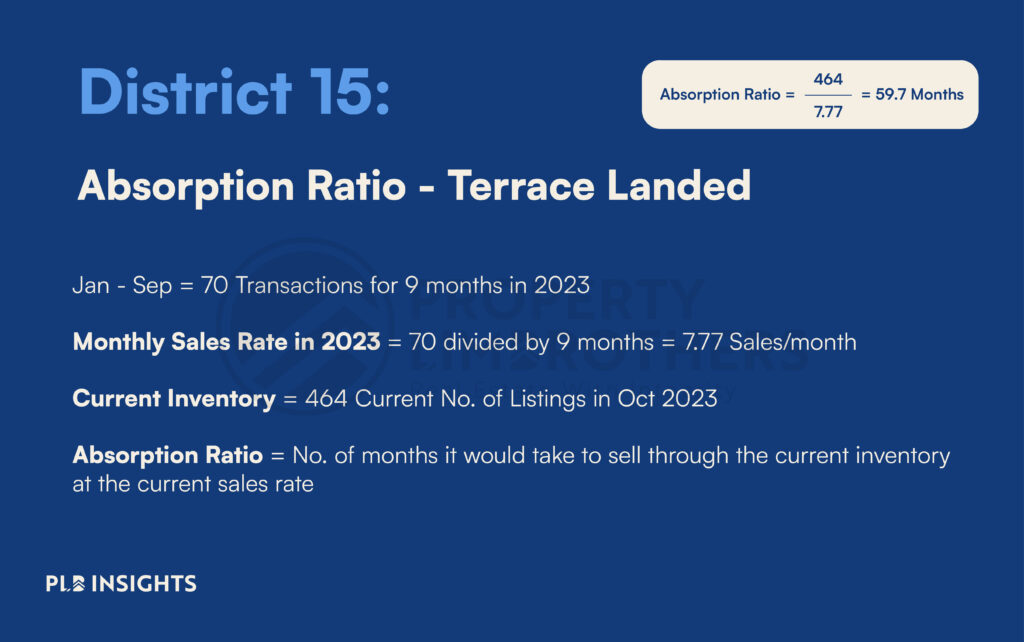
The assumption is that the longer the absorption ratio, the harder it is to exit, and conversely, the shorter the absorption ratio, the easier it is to exit. This tool is valuable for both property owners and investors. For example, a terrace seller in District 15 may use this tool to position their property effectively among the 463 other listings. As a buyer, understanding the absorption ratio helps gauge the ease or difficulty of selling a property in the future.
For both property owners and investors, the absorption ratio serves as a crucial tool. Consider the scenario of a terrace seller in District 15—their concern would be how to strategically position their property among the other 463 listings to stand out. As a buyer, the focus shifts to understanding whether it will be easy or challenging to sell the property in the future.
This ratio is not only a metric for market dynamics but also a practical consideration for those navigating the intricate landscape of landed properties. Understanding the absorption ratio provides a strategic advantage, guiding decisions for both sellers and prospective buyers in the competitive real estate market.
Choosing a Landed Property for Ease of Exit in the Future
Avoid hasty property purchases driven by emotions, and instead, adopt a step-by-step approach. The key mindset is to buy with the exit in mind, allowing flexibility for changes in plans. Whether for legacy reasons or potential diversification into other investments, it’s sound to consider exit possibilities in 5-8 years.
Introducing our MOAT analysis tool for landed properties, based on three methodologies:
- Increasing buyer audience,
- Increasing price acceptability, and
- Reducing unexpected outcomes.
With 21 factors developed, this tool helps navigate the unique landscape of landed real estate. The higher the quantum, the more precise your future buyer’s requirements become, aligning with the PLB Landed Framework’s four main categories.

This leads us to the discussion on the disparity effect, analysing transaction prices of various properties based on landed segments to gauge appreciation over the years. Accounting for potential rebuilds and alterations, the disparity allows a macro perspective on the opportunity costs of various segments and categories.
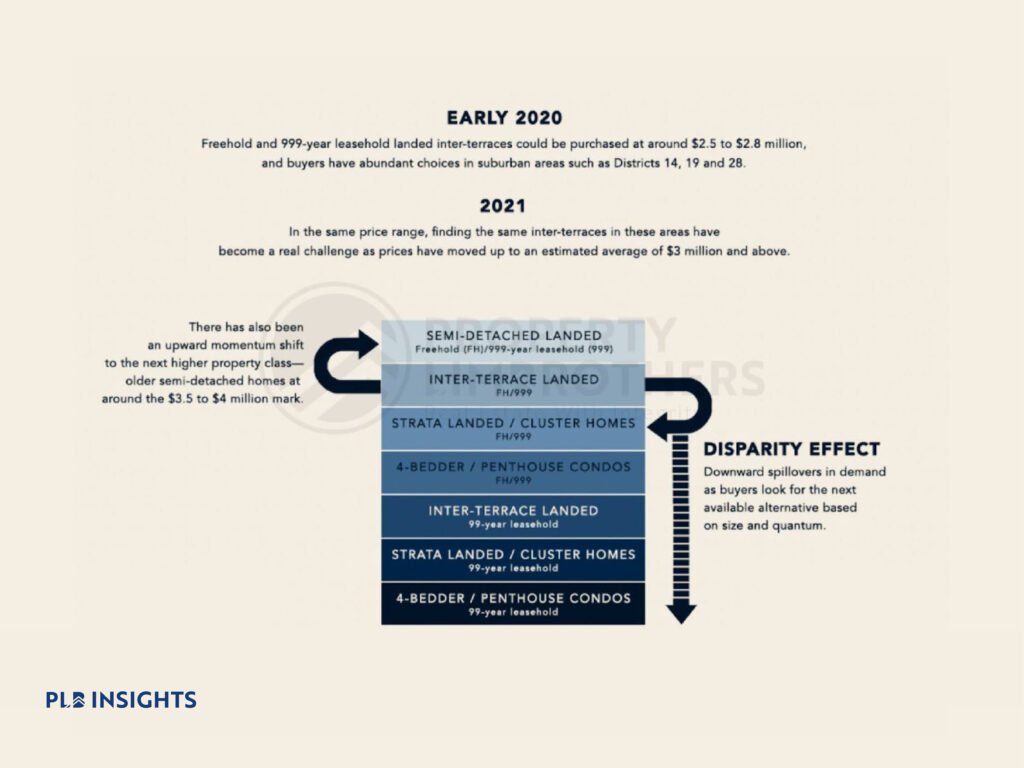
For example, with a budget of $6 million, considering purchasing a $4 million property in D19 and $2 million to do a full rebuild may cost the same as a $6 million brand new inter-terrace. The disparity effect provides insights into appreciation percentages, opportunity costs, and potential holding periods.
Observing the disparity effect between various property segments within the same time period helps assess the value of each property in addition to its status within a certain district and price range. Each district exhibits distinct market behaviours and the disparity effect is not consistent across districts. Once price points hit a certain benchmark level, there may be a spillover effect where buyers consider the next tier upwards or downwards.
Future-proofing becomes imperative when considering the spillover effect. From having a lift to laundry zones, certain configurations ensure a landed property stands out amongst its peers. While some inherent avoidances, such as being near a substation, may exist, it does not mean the property won’t sell. Balancing priorities and mitigating factors is crucial. For instance, a property in your dream district may overcome the avoidance of living near a T-junction. Property owners can add value by improving aesthetics to reduce noise disturbance. Knowing it is nearly impossible to check off all avoidances, more avoidance in a property simply means the property may take a longer period to find the right buyer.
Check out the below video to note what to look out for while considering a rebuild.
Closing Thoughts
In conclusion, we have underscored the pivotal role of frameworks and comprehensive research in the decision-making process. The key concepts touched on include:
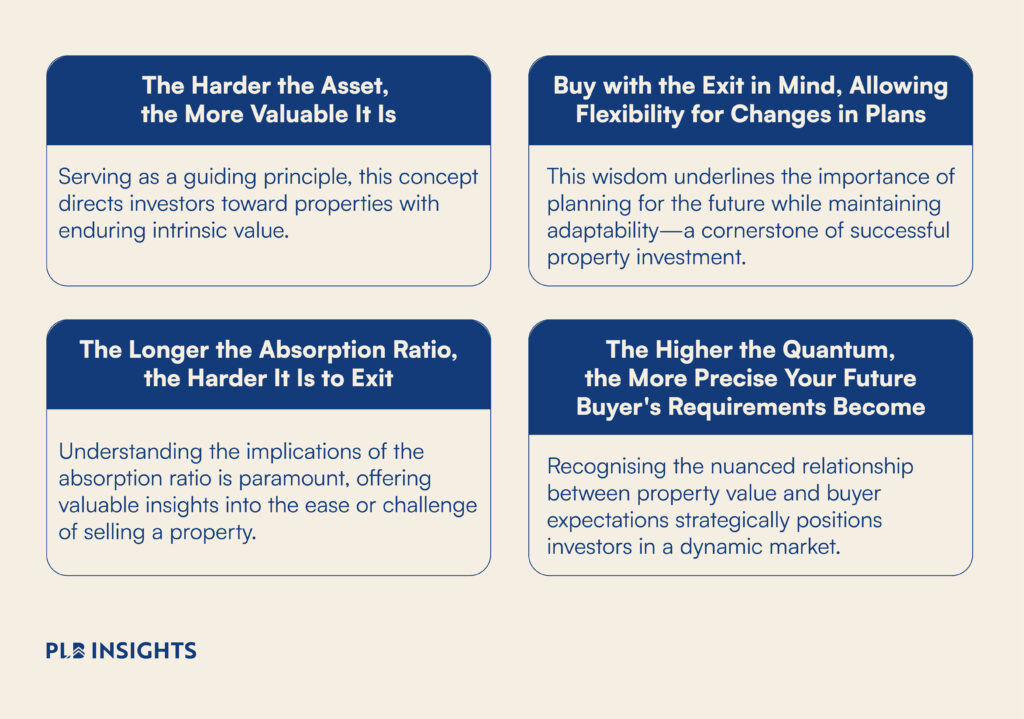
Beyond the charts featured in this article, our dedicated research team has meticulously crafted over 80 additional charts encompassing various districts and their current asking prices. If you are intrigued and would like to find out more, do contact us here and our seasoned consultants will be more than happy to share their comprehensive knowledge to address your inquiries.
Till next time!




